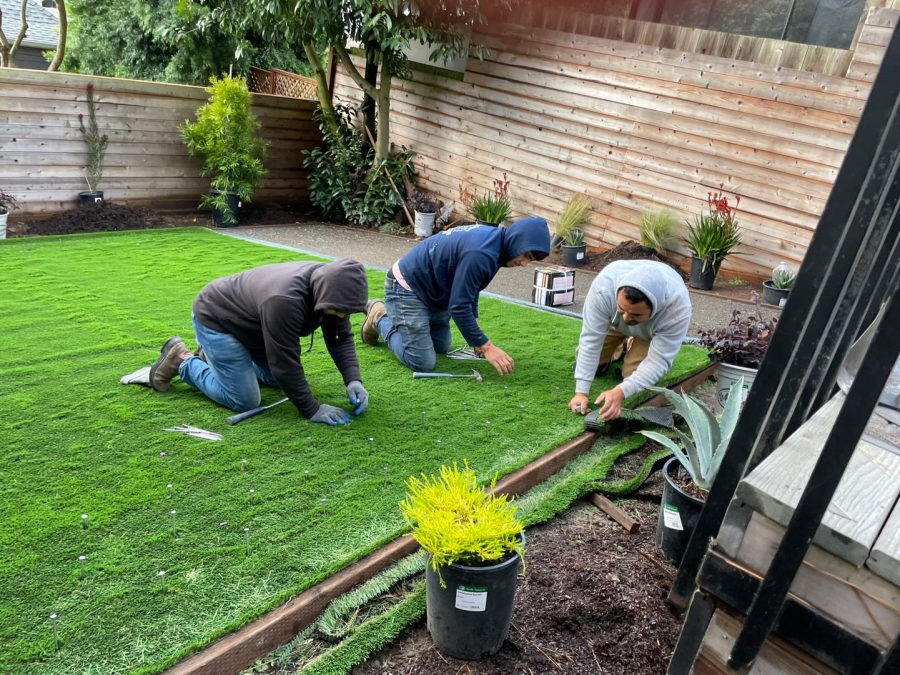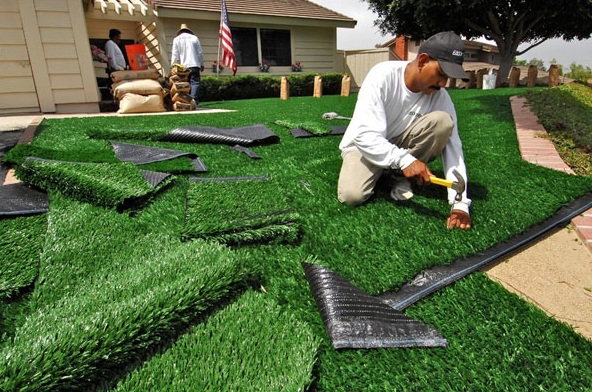Custom Turf Installation Phoenix AZ for Homes, Companies, and Recreational Spaces
Custom Turf Installation Phoenix AZ for Homes, Companies, and Recreational Spaces
Blog Article
Delve Into the Environmental Advantages of Opting for Artificial Grass Solutions
The adoption of artificial grass remedies provides a compelling possibility to deal with pushing environmental difficulties. By dramatically reducing water use and minimizing the application of harmful chemicals, these options not only promote sustainable landscape design yet additionally protect neighborhood communities.
Water Preservation Perks
One of the most significant advantages of fabricated grass is its ability to save water. In comparison, artificial lawn does not require watering, dramatically minimizing the overall need for water sources.
By eliminating the requirement for routine watering, fabricated turf adds to sustainable landscape practices and helps reduce the environmental impact of too much water usage. The conservation of water expands to the reduction of overflow, which can lead to soil disintegration and waterway air pollution.
Additionally, the installment of synthetic grass enables municipalities and property owners to designate water sources more effectively, focusing on crucial usages such as alcohol consumption water and agriculture. The change towards synthetic grass not only promotes liable water usage but also lines up with wider environmental objectives focused on maintaining natural deposits.
As neighborhoods increasingly prioritize sustainability, the water conservation benefits of synthetic grass present an engaging situation for its fostering in property and commercial landscaping projects.
Reduced Chemical Usage
The change to artificial turf dramatically decreases the reliance on chemical treatments frequently made use of in natural lawn maintenance. Standard grass management normally includes the application of plant foods, pesticides, and herbicides to promote growth and control insects. These chemicals can position threats to human wellness, regional wildlife, and the setting, adding to soil and water contamination.
On the other hand, synthetic turf gets rid of the requirement for these unsafe substances. As soon as set up, it requires marginal upkeep, mainly being composed of regular cleaning and infrequent infill replenishment. This reduction in chemical usage not just benefits the instant environment however additionally adds to broader environmental security. By reducing the launch of artificial substances right into the environment, artificial lawn advertises healthier soil and water supply.
In addition, the lack of chemical runoff related to synthetic grass setups aids shield neighborhood waterways from air pollution, supporting marine life and preserving biodiversity. Artificial turf companies phoenix. As neighborhoods progressively prioritize lasting techniques, choosing synthetic grass presents a sensible remedy that lines up with ecological preservation goals. Via this shift, building owners can delight in lush eco-friendly areas without compromising eco-friendly health and wellness, leading the way for an extra lasting future
Reduced Carbon Impact

Furthermore, the installment of synthetic grass can lead to substantial water preservation. All-natural lawns call for considerable quantities of water for irrigation, which not only adds to the carbon footprint related to water removal and therapy however likewise strains regional water sources. In contrast, synthetic grass needs very little maintenance, requiring no watering, thus considerably minimizing water usage and its connected energy prices.
Additionally, the longevity of synthetic grass contributes to its reduced carbon influence. With a lifespan of approximately 15 years or even more, the requirement for regular substitutes is reduced, causing less waste and reduced power intake in manufacturing and dealing with conventional lawn alternatives. In general, synthetic grass offers a sustainable choice for environmentally aware landscape design.
Environment Preservation
Habitat conservation is an important factor to consider in the debate over landscaping choices, specifically when contrasting synthetic grass to all-natural lawn. All-natural yard lawns typically need extensive upkeep, consisting of the use of pesticides, herbicides, and fertilizers, which can adversely influence neighborhood ecological communities. These chemicals can seep into the dirt and rivers, harming indigenous flora and animals and interfering with neighborhood environments.
Artificial grass gets rid of the requirement for damaging chemicals, consequently look here safeguarding neighboring wildlife and preserving the my latest blog post integrity of surrounding ecological communities. The installation of synthetic lawn can lead to the conversion of previous yard areas into even more biodiverse landscapes, such as pollinator yards or native plant locations, which can support regional wildlife.
Inevitably, the shift to synthetic grass not just saves water and minimizes upkeep efforts however likewise promotes a more harmonious partnership in between human tasks and the natural atmosphere, advertising habitat preservation at the same time.
Long-Term Sustainability
Lasting sustainability is a critical variable in evaluating the benefits of fabricated grass over standard grass lawns. One of the most substantial benefits of man-made grass is its durability; it can last up to 15-20 years with very little upkeep, whereas all-natural grass calls for constant reseeding and substitute. This longevity minimizes the demand for consistent sources, such as water, fertilizers, and pesticides, which are crucial for maintaining a healthy yard yard.
In addition, fabricated lawn adds to a reduction in carbon discharges linked with yard care equipment. Standard yards often need gas-powered lawn mowers, leaners, and blowers, all of which contribute to air contamination. Phoenix turf companies. On the other hand, synthetic grass gets rid of the requirement for such equipment, advertising a cleaner setting
Additionally, the production of synthetic grass significantly uses recycled materials, improving its sustainability account. As producers take on green methods, the environmental impact of synthetic grass remains to reduce.

Final Thought
The adoption of artificial grass options offers substantial environmental benefits, consisting of significant water preservation, lowered dependence on damaging chemicals, and a reduced carbon impact. Moreover, artificial lawn aids in preserving all-natural environments by decreasing land disruption and promoting long-lasting sustainability with making use of durable products. Collectively, these aspects underscore the capacity of synthetic grass to contribute favorably to environmental wellness and supply a viable option to standard landscaping methods in a progressively resource-conscious globe.
In contrast, man-made turf does not require watering, considerably lowering the total need for water sources. By lessening the release of synthetic substances right into the community, man-made turf advertises much healthier soil and water systems.
Additionally, the setup of artificial lawn can result in considerable water preservation. In contrast, artificial lawn requires marginal upkeep, needing no watering, thus considerably lowering water use and its connected power expenses.

Report this page